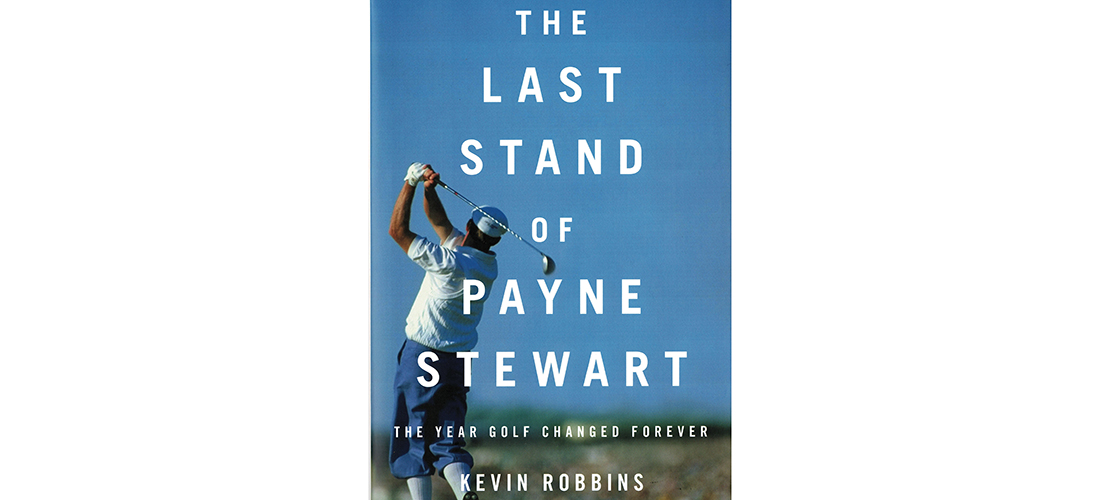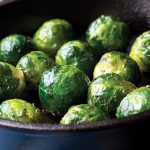
Payne’s Last Stand
A look back at Stewart and the ’99 U.S. Open
By Lee Pace
In 2004, I wrote just under 10,000 words on Payne Stewart’s triumph in the 1999 U.S. Open at Pinehurst for one of the foundation chapters in a book commissioned by Pinehurst Resort titled The Spirit of Pinehurst.
I told the story of his evolution as an individual over the decade of the 1990s before that fateful 1999, with his emotional triumph in June and tragic death in a plane crash in October. Stewart morphed from a man who snickered at one vanquished opponent early in his career but had the grace after beating Phil Mickelson at Pinehurst to congratulate Mickelson on the impending birth of his first child.
The chapter chronicled his equipment overhaul beginning in 1998 and how his new clubs and his right-brained constitution were an ideal mesh of feel and style on a golf course dialed in for players who were artists and not scientists.
It detailed how missing the cut in Memphis the week before the Open allowed Stewart to arrive in Pinehurst early, put in four focused and productive practice days, and be honed to a razor’s edge when the championship began.
How landing in a sand-filled divot was part of his downfall at the 1998 Open at Olympic but how he’d learned to hit out of them a year later — and did so with aplomb in that final round, most notably on his third shot on the fourth hole, when he surgically picked a wedge shot out of a pit and safely onto the green.
How he connected with the townsfolk around Pinehurst, joked with them in the grocery store, dined at the Pine Crest Inn and had a heartfelt reunion with former instructor Harvie Ward before the final round.
And how his impromptu scissor job on a long-sleeve rain jacket on a misty and drizzly Sunday ignited a fashion trend.
Thus I wondered what I might glean from reading Kevin Robbins’ book The Last Stand of Payne Stewart — The Year that Golf Changed Forever. The book was released in October, two decades after Stewart was killed when the plane he was taking from Orlando to Dallas malfunctioned and sent six people to their death.
The answer was, quite a lot.
Robbins does an excellent job chronicling Stewart’s upbringing in Missouri in the 1960s and early ’70s and how he developed his game under the tutelage of his father, Bill, and Sam Reynolds, the club professional at Hickory Hills Country Club in Springfield. Stewart was weaned on steel shafts, persimmon-wood heads, forged-blade irons and balls wound with rubber bands inside covers of balata rubber.
Stewart “churned a lot of dirt” as a youth and learned to develop “a sense of the shot through the soles of his shoes and a clear, crisp picture of the way he wanted the shot to look and feel off the club,” Robbins writes. “He learned to visualize shots before hitting them, to develop rhythm through his feet.”
The book traces how Stewart found his niche on the PGA Tour in the 1980s but became an outlier because of an attitude that could be “prickly, cocky, arrogant and brash,” as his sports psychologist described him in the early days.
“He was a peacock, a Missouri showman, someone who wanted to be heard and noticed and remembered and admired,” writes Robbins, a longtime golf writer with the Austin Statesman-American. “He was loud in a sport that valued silence. He was cocksure in a game that promoted humility and modesty. He was too much for some of his peers who preferred less.”
The book traces in intricate detail Stewart’s maturation over the 1990s, when he struggled professionally and personally but began laying the groundwork for his Pinehurst triumph by challenging for the win the previous year at Olympic, then finally breaking a long victory drought at Pebble Beach in early 1999.
“Payne went off into the wilderness in 1991,” Robbins says. “He was searching. When he emerged in 1998, he didn’t just talk like a different man, he showed people he was a different man.”
That point was poignantly made in September that year when Stewart conceded a putt and a victory to Colin Montgomerie on the final day of the Ryder Cup at Brookline after the United States’ victory had been assured. Robbins captures the night before in the U.S. team room when Stewart spoke movingly of the pain he’d felt since 1985 following the death of his father to cancer.
“Sitting nearby, O’Meara, Tom Lehman and Hal Sutton — the last of their generation preparing for their last singles Sunday of their Ryder Cup careers — were moved by Payne in a way they never had been before or even thought possible,” Robbins writes.
That capsule sets the stage for what to me was the most interesting angle of the book — how 1999 was the unofficial passing of the torch with players like Stewart, Lehman, Sutton and O’Meara, all in their 40s, taking a back seat to a younger generation of players and a new frontier of technology. The new guys played with graphite and titanium shafts and the Titleist Pro V1 and spent their spare time pounding dumbbells rather than Michelobs.
“From a commercial standpoint, there was a lot to like about the state of golf in the summer of 1998,” Robbins writes. “The new balls were designed to make shots more predictable, especially in the wind. Graphite shafts and metal woods rendered long holes simpler to manage. The blocky, cavity-backed irons were less demanding of a perfect strike. Golf was getting easier for a greater number of people. But that welcome development robbed the ancient game of some of its art. Payne, Lehman, and their generation didn’t need technology to make shots. They made their own. They were the last true shot-makers of the millennium.”
Players like Mickelson, Tiger Woods and Sergio Garcia were playing a different game. Soon to follow were Bubba Watson, Rory McIlroy, Jordan Spieth, Dustin Johnson and, most recently, Brooks Koepka.
“Golf came easier to the new guys because the game was easier,” Robbins says today. “This was the emergence of athletes on the golf course. They hit the ball a long way. They didn’t really care if the ball rolled into the rough. Everything was different — the equipment, the ball, the diet, fitness, the psychologists. There was a confluence of forces that came together in 1999.”
Not a day goes by at Pinehurst two decades later that a resort guest doesn’t have a photo taken while making the “Payne pose” alongside his statue beside the 18th green of No. 2. Stewart’s photos and his autograph are still displayed in the lobby of the Pine Crest Inn. The USGA used the occasion of the 2014 U.S. Open at Pinehurst to posthumously honor Stewart with the Bob Jones Award, and golfer Rickie Fowler was resplendent that week wearing plus-four trousers, Stewart’s trademark.
Some of those things, I’d forgotten. The year 2019 is a nice round milestone to reflect on 1999.
“The passage of time — in this case, 20 years — allows us to see that year and Stewart’s comeback in a sharper perspective,” says Robbins. “We didn’t know at the time how golf was shifting. The emergence of a 23-year-old Tiger Woods and players of his generation, who played the game with power and athleticism, essentially was making obsolete the kind of finesse game that Stewart and his generation played. I also was interested in portraying Stewart’s maturation — we might call it redemption — on a personal level. He was showing us something: his growth.” PS
Chapel Hill-based writer Lee Pace has written about Payne Stewart and dozens of memorable golfers in Pinehurst over some three decades. Write him at leepace7@gmail.com.





